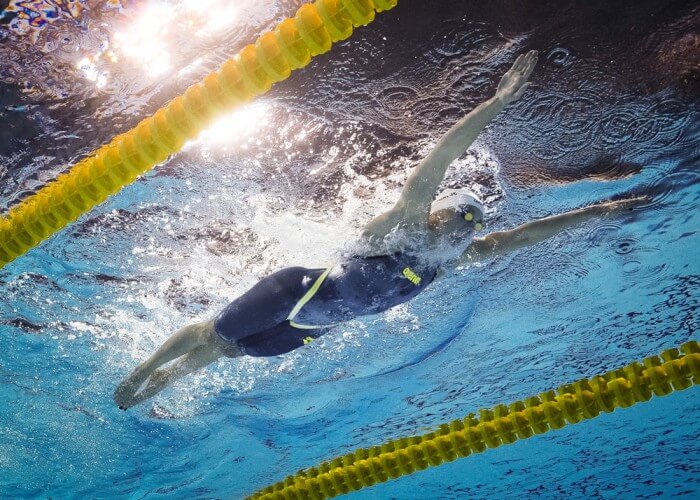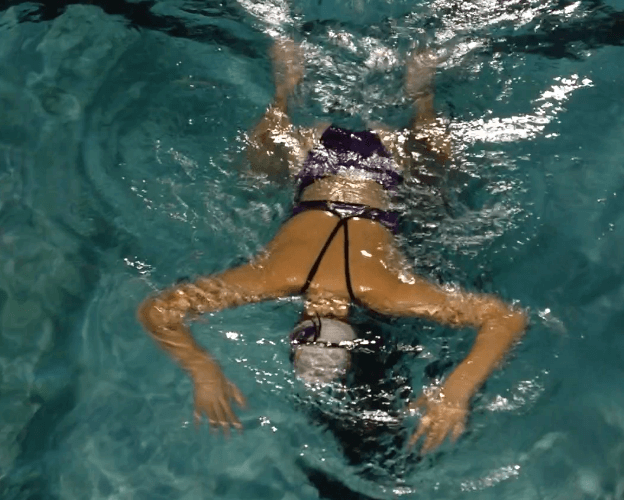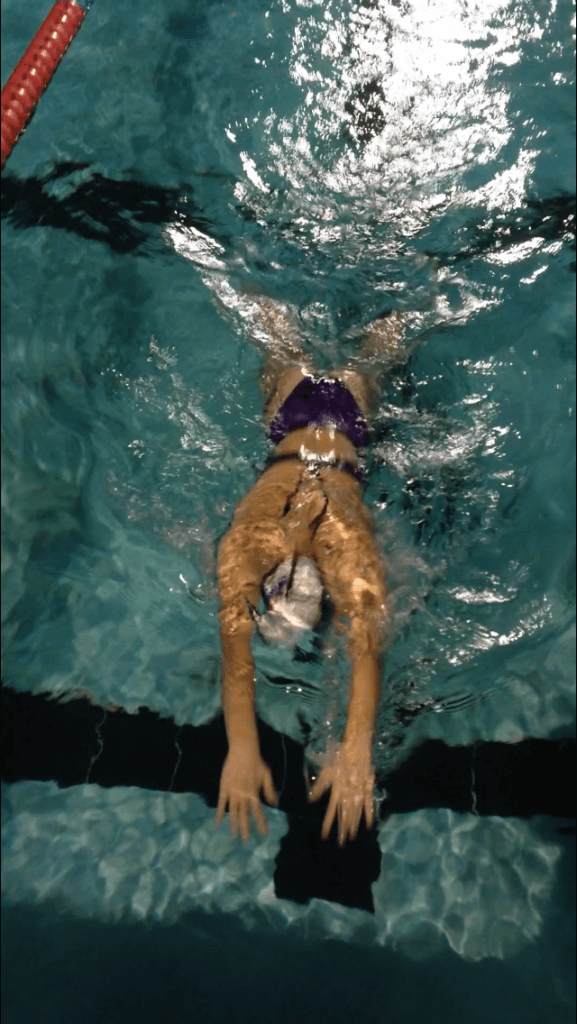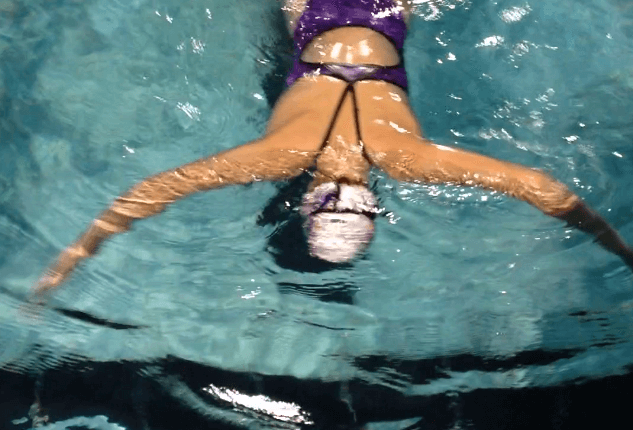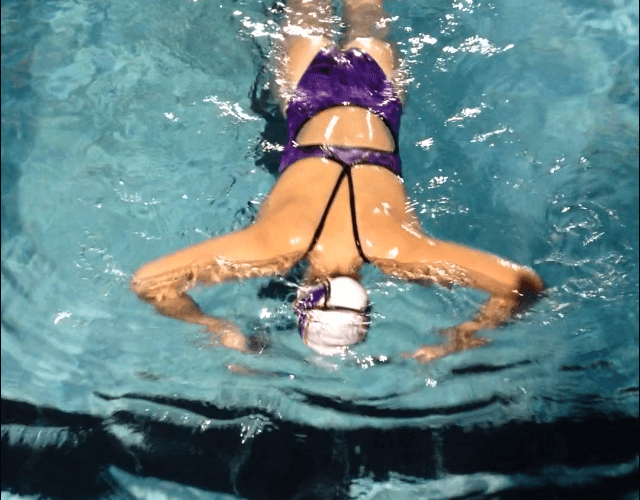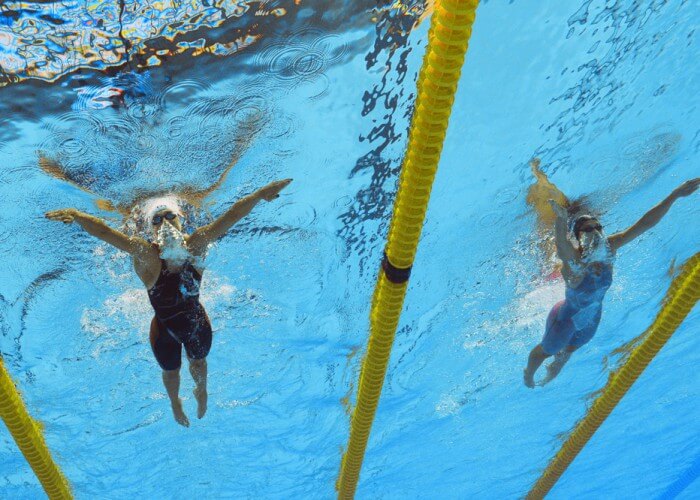5 Ways to Transform Your Breaststroke (Featuring Drills)
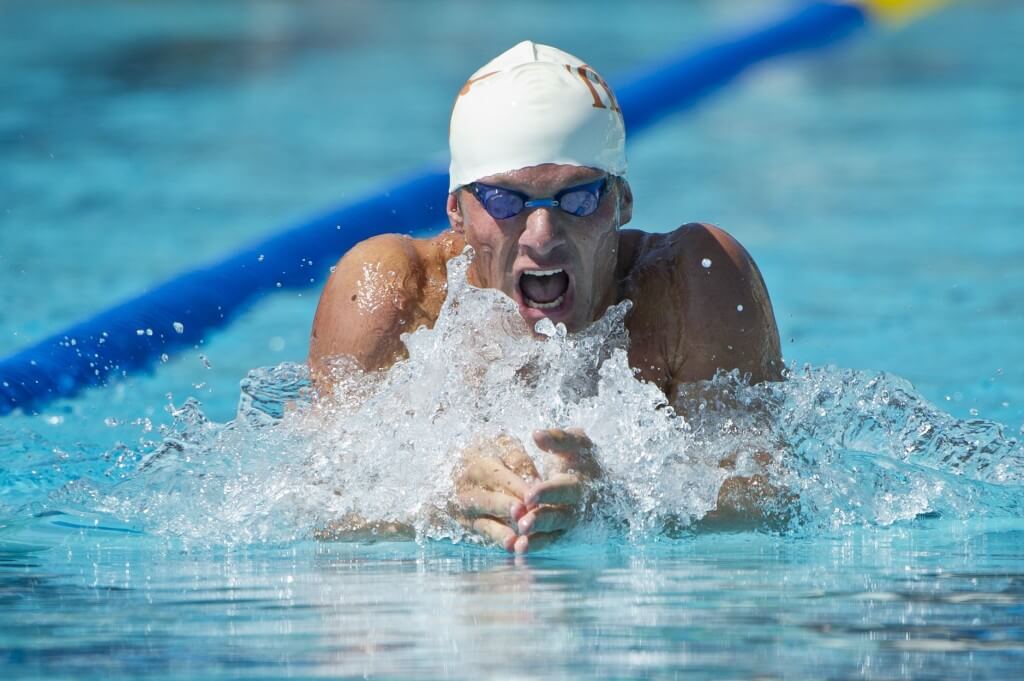
5 Ways to Transform Your Breaststroke (Featuring Drills)
By Annie Grevers, Swimming World Staff Writer and Lifelong Breaststroker
Republished from the Swimming World archive
There are many variations of breaststroke: the turtle, the dart, the deep sea diver, the frat boy (arms only), the inch worm, the water bug, you’ve seen ’em all. Then there are those beautiful strokes that look like a sweet symphony of motions; creating a wave and then riding it. I spent years studying the stroke, and although I’ve learned breaststroke needs to be customized for an individual, there are a few components the all-time greats share.
1. Find that elusive NARROW KICK
This goes against everything we believe as an age grouper. I want a big kick right? In order to hold as much water as possible? The wide kick may cause less pressure on your knees, but all of that pressure lands on your groin. Ouch. And your thighs cannot actually move water effectively by going wide. You’re simply creating a parachute– water crashes into your outer thighs while you’re in the least momentous position of the stroke. There’s no snap at the end of your kick because you’re essentially on one of those awkward machines in the weight room, squeezing your thighs together and not using and big muscles to do so.
Why go narrow? It takes less time to complete a kick, you have a better grip on the water at the top of your kick, you’re able to finish up with that extra power you have at the conclusion of each kick…taking you right into your next kick and emulating the same dolphin motion we feel with our hips in butterfly.
DRILL: Breaststroke kick with a buoy. Some kids will not be able to hold the buoy because they have no clue which muscles keep their thighs from splaying out. I tell my kiddos to “use your horseback-riding muscles.” Those are your inner thighs, which are not accustomed to working during breaststroke.
2. Fix your TIMING
A strong kick might make you good. A strong pull might make you above average. But if these two elements are not synced, the swimmer with a mediocre pull and kick which are well-timed can beat you. It’s human nature to want to dive in and work every muscle. There’s some guilt involved in becoming an efficient swimmer. My tempo can be slower, the lap can be easier, and I can go faster?! What? Get over the guilt of the ease found in efficient breaststroke and get the most out of each explosive movement.
Finish your kick BEFORE you start your pull. The number one timing tip you need to archive. I hate to even see kids begin sculling out before their feet have finished. They’re ruining that wondrous burst forward which comes with finishing your kick. It’s like cutting off Adele before she hits her most inspiring note. Everything might be great, but you’re not seeing the reward of your scull, sweep, shoot and kicking labors! There’s a moment in each stroke you should feel like Superman or Wonderwoman, soaring forward.
DRILL: Moose drill. Pancake your body flat on the surface. Skate your hands outside of your ears (like Moose antlers), cock the kick. Elbows are bent when knees are bent. Then SHOOT forward to full extension with lightning speed hands and an explosive kick. Swimmers should feel like they’re slingshotting forward when they get their timing right. Pop head up for breath when needed.
Starting position
Hands BURST forward as swimmer kicks
3. Find your SWEEP
You’ve heard of an in-sweep before, but most of us find it much easier to wax the water than to actually dig into it. The in-sweep marks the step between your outward scull and your shoot forward. The majority of swimmers have not yet found their in-sweep. It’s just easier to let your elbows fall to your sides and wipe the surface of the water.
Have you ever seen super fast breaststrokers’ forearms? They’re like Popeye’s. Hmmm. Sure you use your forearms when you press out, but your really put them to work by moving the water with your forearms and palms during the in-sweep. The first step to acquiring an in-sweep? Keep your elbows away from your body. Glue your elbows outside of your shoulders (think a T-position if you were standing), then your forearms are like pendulums sweeping in toward one another, dangling from your cemented-in-place elbows.
DRILL: Windshield Wiper. Wear a snorkel if you have one! Body rests on the surface in a T-position. Elbows outside of shoulders, pinkies outside of elbows. With fingertips down and thumbs angled toward one another scull in. Do not let your elbows budge from the surface, feel water on both forearms and palms. A slight flutter kick behind is allowed, so each 25 doesn’t take 5:00.
Starting position
Wiping in: fingertips down, wrists strong.
4. Be DYNAMIC
The best breaststrokers do not swim every portion of the stroke at the same speed. They take their time initiating the pull/gripping water, build through the in-sweep, and sprint the straight-away. They’re not spinning in one gear. If you have a lousy kick and and a lousy pull, timing and stroke dynamics can allow you to “fake” a decent breaststroke. Watch Adam Peaty smash the world record in the 100 breast, appreciate the enthusiasm of the announcer, and take note of how fast he fires his hands forward in perfect harmony with his kick. If you don’t consider yourself a breaststroker, I bet you’ve never tried exploding through this portion of your stroke; it’s a lot of effort in about .2 seconds. But the reward of throwing your body weight toward the finish line can be one heck of a momentous glide.
DRILL: Moose is probably the best drill to hone the fastest part of your stroke (try to get white water to come off of your hands). Another explosive drill is Y-Start Breaststroke. Think of pressing pause at the top of your pull, when your body is in a Y-position. Pause for one Missisippi then explode into a single stroke. Gently scull back to the Y-Position and regroup for another dart forward.
5. Become A Breaststroke Puller
Yes, breaststroke is seldom your first choice when doing a pull set, but get into the habit of throwing in a 25 or a 50 here and there. Then work your way up to doing entire 75s and 100s of breaststroke pull. Not only will this strengthen your forearms and biceps, but you will learn how far some core strength can take you with each extension. Too many swimmers throw core out of the game while doing breaststroke, but when you’re hitting a streamline within each stroke, a sturdy platform is important! Also, your arms will look like you just did hundreds of bicep curls post-pull set…because hey, that’s what an in-sweep should be.




